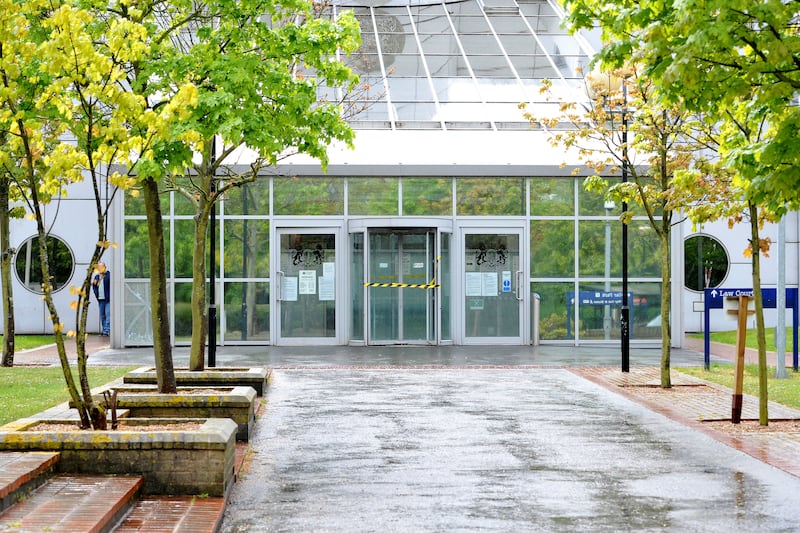We are all familiar with the quote: “A lie can travel halfway around the world while the truth is still putting on its shoes.” And more than 100 years later with the help of our online platforms, it’s truer now than ever.
Every single day we are bombarded with information on social media and online that we naturally consume and absorb on trust. Some of this information is dressed up as news, delivered via platforms that look like news platforms. We are programmed to believe what is provided to us via trusted sources.
♦ Subscriber Exclusive: Q&A with columnist Tom Kelly
Back in the 1930s, there was mass panic in the US after the radio drama The War of the Worlds aired.
The broadcast, directed by and starring Orson Welles, was so realistic that some listeners believed a Martian invasion was actually taking place, particularly due to the ‘breaking news’ style of storytelling and the fact that the programme did not break for commercials. Later research found that most listeners had switched over from another show and didn’t catch the disclaimer that it was a theatrical production at the start and only heard the terrifying ‘news’ segment and ran with it. But it just shows how human beings can be duped by how information is delivered to them.
We have come a long way since The War of the Worlds drama, but also haven’t travelled very far at all. The power of modern day information spreading was on show in technicolor on Halloween night.
Read more: Hundreds gather in Dublin for non-existent Halloween parade
Hundreds of people were tricked and turned up on the streets of Dublin for a parade that had been falsely advertised on what some media outlets have described as an ‘AI generated website’ based in Pakistan.
The website owners have since apologised for the mistake – the parade happened last year but was not planned for this year - but their mistake was picked up and spread like wildfire on social media, resulting in families dressing up and lining O’Connell Street for hours waiting on a non-existent spooky parade.
If nothing else, it was a big, scary lesson in how ordinary people can be duped by false information online.
Over the last few years we have seen this play out again and again. Covid deniers, anti-vaccine campaigners, 5G folks, climate change deniers, anti-immigrant campaigners, peddlers of hate, chaos and distrust – all tapped into our concerns and fears and ran with them, usually monetising their content so they could make money from people whose fear they have ramped up.
Skilled manipulators - whether they be individuals, organisations, or even foreign governments - craft misinformation that plays on human emotions, making it hard to resist and easy to believe
All the while these people discredited the media so you would not trust the actual facts when they are presented to you. It’s so choreographed, so plain to see, but people will believe what they want to believe and that’s what those peddling misinformation are depending on.
In our hyper-connected world, we are more informed than ever, but that means we are also more vulnerable to deception. The internet is indeed a powerful tool, not only for getting information out there, but used by those intent on malice to spread lies and false information. The Dublin Halloween incident genuinely looks like a mistake, but the reality is that false information reached so many people so very easily over a short period of time and made them act. It shines a light on how dangerous online information can be.
Read more: Cormac Moore: Fake news and the battle over the Irish border
Skilled manipulators - whether they be individuals, organisations, or even foreign governments - craft misinformation that plays on human emotions, making it hard to resist and easy to believe. A lot of the time it plays into people’s fears and reinforces them.
This manipulation of trust is dangerous. False beliefs lead to real-world consequences, from vaccine hesitancy and political polarisation to environmental harm. The more we fall victim to these narratives, the more polarised and susceptible our societies become.
I’m a journalist, I know the checks that have to go into information before it is published, I always lean into the media and distrust those who seek to discredit it for their own aims – mostly to have you consume their information and make money from fear and hate.
We all have to be careful navigating this new world. Scrutinise sources, question sensational claims, look for corroborating evidence, question why people are asking you not to trust real media who have to check and check again their information before putting it out for public consumption and who are regulated within an inch of their lives.
Peddlers of information on social media can say whatever they like.
Back in the day they used to say ‘don’t believe everything you read in the newspapers’. The modern day version of that could be ‘don’t trust everything you read online’.









